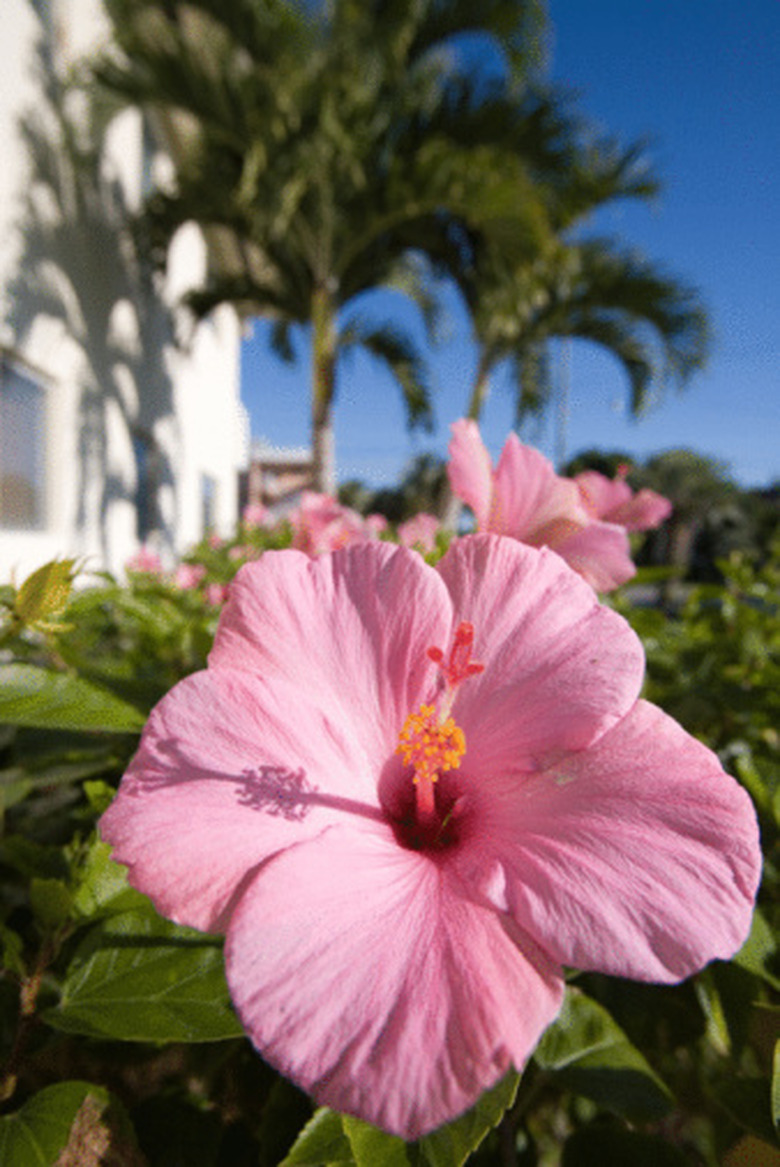Does A Hibiscus Tree Like Sun Or Shade?
Hibiscus trees, known for large flowers used often in Hawaiian art and design, thrive in many areas when planted in the proper conditions. There are two main types of hibiscus trees — subtropical hibiscus and cold-hardy trees known as Rose of Sharon. The proper light conditions are necessary for the hibiscus to produce enough food to thrive.
Best Light Conditions for Hibiscus
Hibiscus and Rose of Sharon trees grow best when planted in full sun conditions. The plants require six to eight hours of daily sun to survive.
Protection
While the hibiscus tree requires full sun, it may need protection from harsh afternoon sun, according to the National Arbor Day Foundation.
Determining Best Planting Area
The best way to determine where to plant your new hibiscus tree is to watch the way the sun moves through the garden space throughout the day. Select an area that features sun throughout the morning, but is partially shaded during the afternoon.
- Hibiscus trees, known for large flowers used often in Hawaiian art and design, thrive in many areas when planted in the proper conditions.
- While the hibiscus tree requires full sun, it may need protection from harsh afternoon sun, according to the National Arbor Day Foundation.
Growing Indoors
Some hibiscus varieties can be adapted to growing indoors, according to the Australian Native Hibiscus website. The Hibiscus tiliaceus grows well indoors when placed on a sunny windowsill.
Hibiscus Tree?
The hibiscus tree produces trumpet-shaped flowers that come in white, yellow, peach, pink, red, purple, blue or lavender. These blooms can grow as large as 6 inches in diameter. The deciduous hibiscus tree has dark green leaves that develop in the spring. Growing the most robust hibiscus tree means finding a spot in your yard that receives full sun. The tree also requires well-drained soil with a rich humus content, although it can tolerate a wide variety of soil types. Hibiscus trees can grow as much as 8 to 12 feet tall and 6 to 10 feet wide. When mature, the tree takes on a vase-like form. While the hibiscus tree is relatively free of serious problem, it may develop leaf spots, rusts, canker or blights, so watch out for these issues. You can transfer seedlings to containers and replant them elsewhere.
- Some hibiscus varieties can be adapted to growing indoors, according to the Australian Native Hibiscus website.
- While the hibiscus tree is relatively free of serious problem, it may develop leaf spots, rusts, canker or blights, so watch out for these issues.
References
- National Arbor Day Foundation: Rose of Sharon
- Austrailan Native Hibiscus: Hibiscus Tiliaceus
- Utah State University Extension: Hibiscus
- Arbor Day Foundation: Rose-of-Sharon, Hibiscus Syriacus
- National Gardening Association: Hibiscus
- Missouri Botanical Gardening: Hibiscus Syriacus
- University of Florida Extension: Insect Problems of Hibiscus
